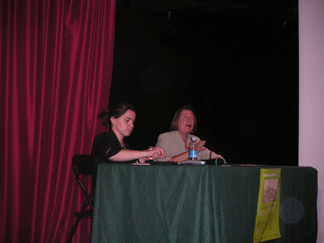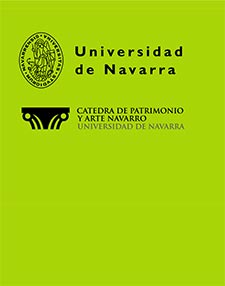HERITAGE WITHIN EVERYONE'S REACH. FROM ROMANESQUE TO BAROQUE IN THE AREA OF TAFALLA
September 21, 2005
Town Planning and Main Houses in Tafalla
Mrs. Pilar Andueza Unanua
Organised by the Chair de Patrimonio y Arte Navarro and Tafalla Town Council.

With the lecture "Urbanism and main houses of Tafalla", the professor of the University of Navarra Pilar Andueza Unanua closed the summer course "Heritage within everyone's reach. From the Romanesque to the Baroque in the area of Tafalla".
In her opinion, a walk through the streets of Tafalla shows the deep traces that History has left both in its urban planning and in its civil architecture, in spite of the fact that some of the jewels that the city had disappeared, thanks to the mentalities that blew in other times, especially in the 19th century, a century that left an indelible mark, both positive and negative.
According to the professor, the medieval origin of Tafalla is still evident today in the neighborhood of La Peña, a primitive nucleus that arose around a castle built for defensive purposes on the hill of Santa Lucía. The need to adapt to the topography explains the irregular and complex layout of its streets. The maximum apogee and growth of the then town came in the leave Age average, especially when at the beginning of the 15th century the monarch Carlos III decided, shortly after finishing the royal palace of Olite, to build another palatial residency program in Tafalla. This period saw the emergence of a medieval expansion, with its main street, which would be surrounded by a wall. It was not until the last years of the 16th century that Tafalla managed to expand beyond that stony medieval wall. From then on, the religious orders of the Capuchins and the Franciscan Recollects, and noble families such as the Mencos and the Vega, marquises of Feria, managed to cross the line of the Camino Real -today Severino Fernández Avenue- to erect their convents and their main houses, with a stately appearance, giving rise to a new phase of expansion. Finally, Andueza highlighted the importance of the 19th century for the city, thanks to two fundamental events, the construction of the place Nueva in 1856 by the Vitoria architect Martín de Saracíbar and the arrival of the railroad to the city in 1859. The Building of a train station and a bridge over the Cidacos allowed the expansion of the city in that direction, while in the north the typical nineteenth-century boulevard, the Paseo del Padre Calatayud, emerged. In both places the bourgeoisie built single-family houses in very different styles, ranging from eclecticism to modernism.
PROGRAM
MONDAY, 19 SEPTEMBER
The Romanesque in Valdorba: The Church of Cristo de Cataláin
Ms. Santiaga Hidalgo Sánchez
Romanesque in Valdorba: Other churches. The Hórreo of Iracheta
Dr. Alberto Aceldegui Apesteguía
TUESDAY, 20 SEPTEMBER
The parish church of Santa María. The main altarpiece by Juan de Anchieta.
Dr. María Josefa Tarifa Castilla
The Royal Palace of Tafalla
Dr. Emilio Quintanilla
WEDNESDAY, 21 SEPTEMBER
The altarpiece of Recoletas: The triumph of Renaissance painting.
Dr. Asunción Domeño Martínez de Morentin
Town planning and main houses in Tafalla
Dr. Pilar Andueza Unanua

